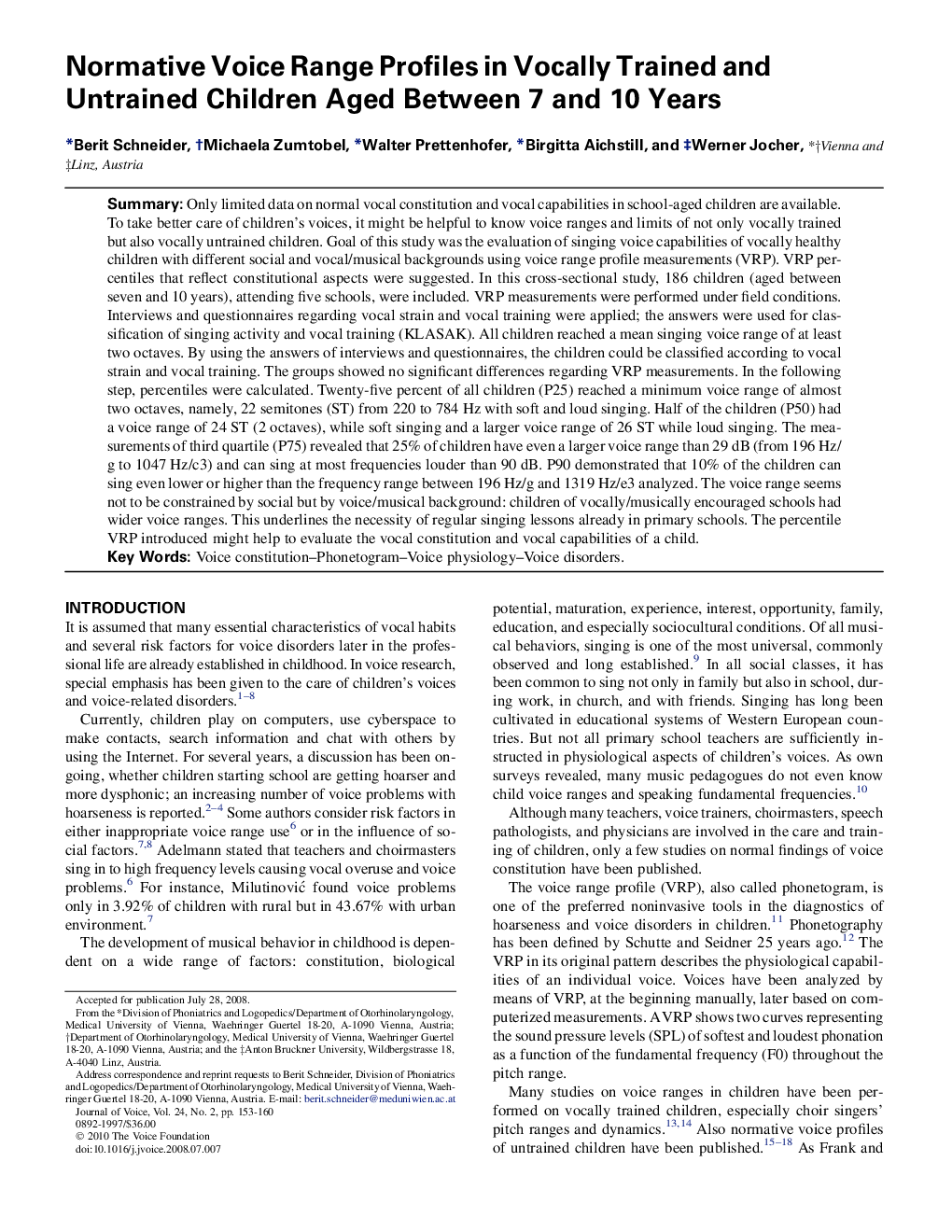| Article ID | Journal | Published Year | Pages | File Type |
|---|---|---|---|---|
| 1102526 | Journal of Voice | 2010 | 8 Pages |
Abstract
Only limited data on normal vocal constitution and vocal capabilities in school-aged children are available. To take better care of children's voices, it might be helpful to know voice ranges and limits of not only vocally trained but also vocally untrained children. Goal of this study was the evaluation of singing voice capabilities of vocally healthy children with different social and vocal/musical backgrounds using voice range profile measurements (VRP). VRP percentiles that reflect constitutional aspects were suggested. In this cross-sectional study, 186 children (aged between seven and 10 years), attending five schools, were included. VRP measurements were performed under field conditions. Interviews and questionnaires regarding vocal strain and vocal training were applied; the answers were used for classification of singing activity and vocal training (KLASAK). All children reached a mean singing voice range of at least two octaves. By using the answers of interviews and questionnaires, the children could be classified according to vocal strain and vocal training. The groups showed no significant differences regarding VRP measurements. In the following step, percentiles were calculated. Twenty-five percent of all children (P25) reached a minimum voice range of almost two octaves, namely, 22 semitones (ST) from 220 to 784Â Hz with soft and loud singing. Half of the children (P50) had a voice range of 24 ST (2 octaves), while soft singing and a larger voice range of 26 ST while loud singing. The measurements of third quartile (P75) revealed that 25% of children have even a larger voice range than 29Â dB (from 196Â Hz/g to 1047Â Hz/c3) and can sing at most frequencies louder than 90Â dB. P90 demonstrated that 10% of the children can sing even lower or higher than the frequency range between 196Â Hz/g and 1319Â Hz/e3 analyzed. The voice range seems not to be constrained by social but by voice/musical background: children of vocally/musically encouraged schools had wider voice ranges. This underlines the necessity of regular singing lessons already in primary schools. The percentile VRP introduced might help to evaluate the vocal constitution and vocal capabilities of a child.
Keywords
Related Topics
Health Sciences
Medicine and Dentistry
Otorhinolaryngology and Facial Plastic Surgery
Authors
Berit Schneider, Michaela Zumtobel, Walter Prettenhofer, Birgitta Aichstill, Werner Jocher,
